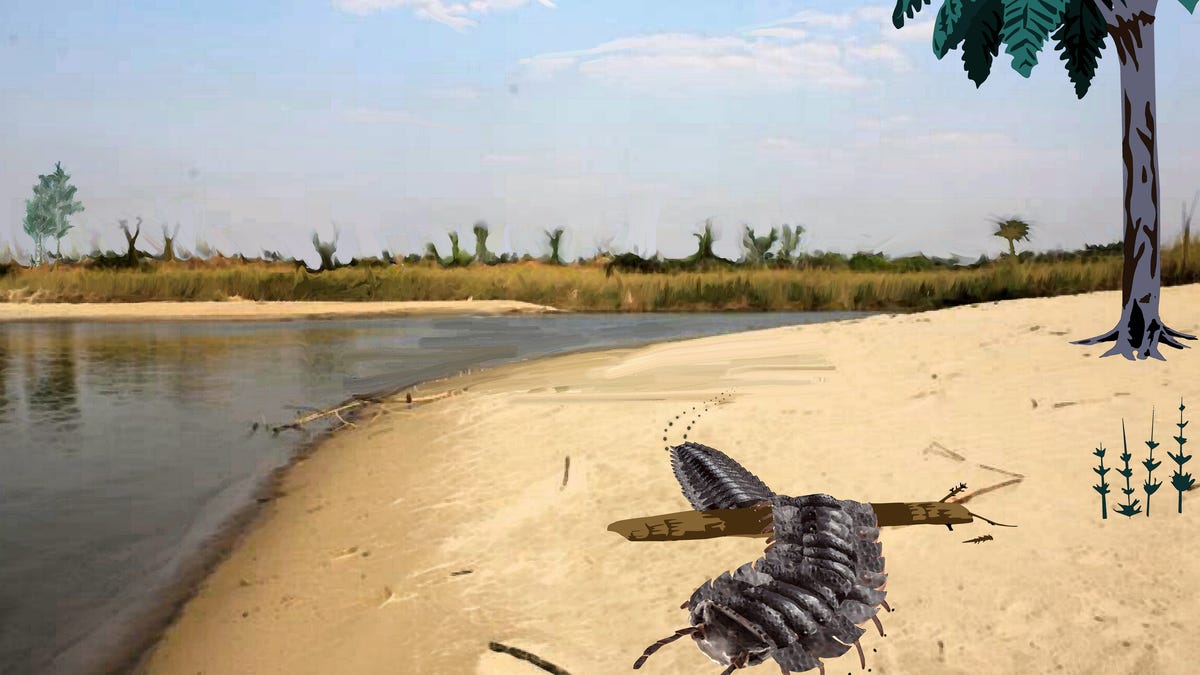Before dinosaurs, millipedes larger than you crawled the Earth
Scientists just found a fossil of one that might have been longer than your Christmas tree is tall.

A millipede weighing in at over 100 pounds? It's entirely possible.
Imagine a creepy, crawly, leggy little millipede traversing your room. Now enlarge your mental picture until the critter is roughly the size of a professional basketball player. In northern England, scientists just found a fossil of the creature you've conjured, minus the head.
Though the research team calculated the real-life version of the millipede to be up to as much as 2.6 meters (8.5 feet) in length and about 50 kilograms (110 pounds) in weight, the fossilized segment was only 75 centimeters (30 inches) of the body.
"Finding these giant millipede fossils is rare, because once they died, their bodies tend to disarticulate, so it's likely that the fossil is a moulted carapace that the animal shed as it grew," Neil Davies from the University of Cambridge's department of earth sciences and lead author of the study, said in a statement. "We have not yet found a fossilized head, so it's difficult to know everything about them."
Having published a study Monday in the Journal of the Geological Society about what they could decipher from the find, the team says such giant millipedes, dubbed Arthropleura, roamed Earth about 376 million years ago during the Carboniferous Period.
That's about 100 million years before dinosaurs existed, and now -- thankfully for the creepy-crawly-phobic -- the species is extinct, possibly due to either succumbing to climate change or falling prey to the rise of reptiles, the scientists say.
Don't get too comfortable, though, because there's still a lot going on in the millipede-verse. A separate crew of researchers just last week announced their discovery of the first "true" millipede, with over 1,000 legs. And it's still around.
Back on the side of history behind a glass wall, only two giant millipedes have ever been found, both in Germany. That alone makes this third one a rare find, but its sheer magnitude also bumps the species up to first place on the ledger of largest invertebrates of all time, beating out another ancient monster, the giant scorpion.
The three giant millipedes found in fossilized form. The highlighted sections indicates the portion discovered by researchers today. Left, is the newest one found in England.
The research team speculates that the land dweller's size was a consequence of diet, in contrast to previous explanations that suspected peak oxygen levels had a hand in its heft. "While we can't know for sure what they ate, there were plenty of nutritious nuts and seeds available in the leaf litter at the time, and they may even have been predators that fed off other invertebrates and even small vertebrates such as amphibians," Davies said.
Calling the excavation a "fluke," Davies explains that the millipede's remains were in a large block of sandstone that had fallen from a cliff to a beach at Howick Bay in Northumberland, England. "The fossil is so large it took four of us to carry it up the cliff face," Davies said of the May 2018 effort.
The research team near the fossil they stumbled upon.
The fossil was located near what used to be a river channel hundreds of millions of years ago. "The way the boulder had fallen," Davies said, "it had cracked open and perfectly exposed the fossil, which one of our former Ph.D. students happened to spot when walking by."
Thanks to a keen eye, we're gaining a clearer picture of what Earth once looked like -- and unlocking a new category of nightmares.

